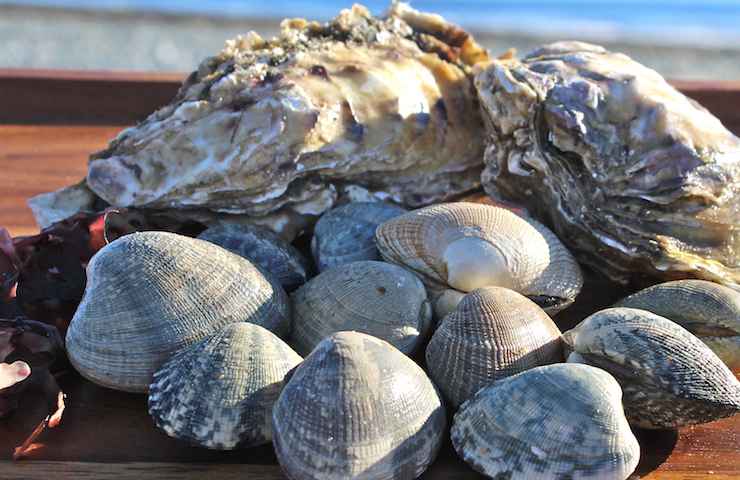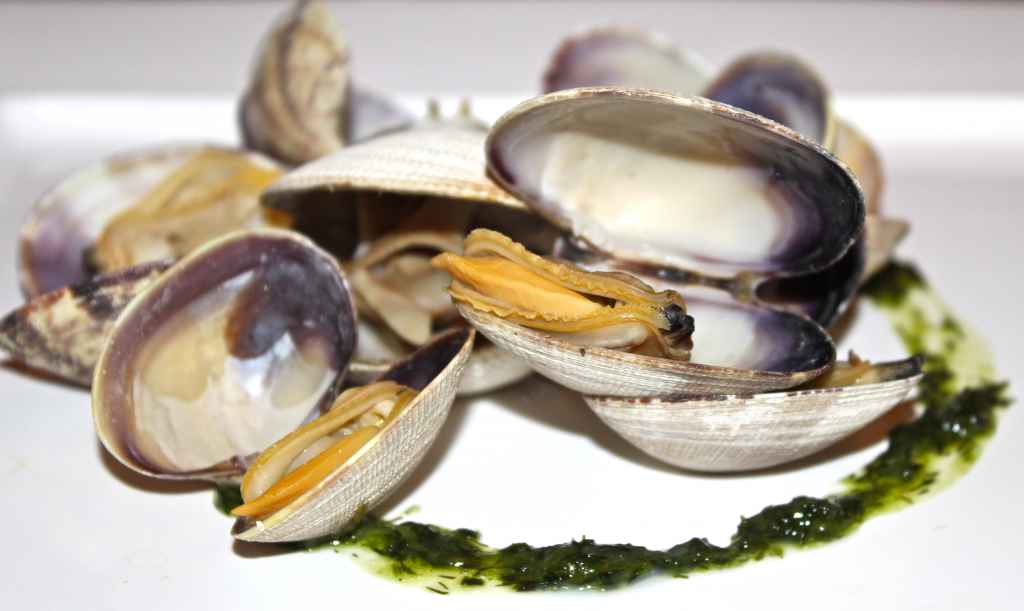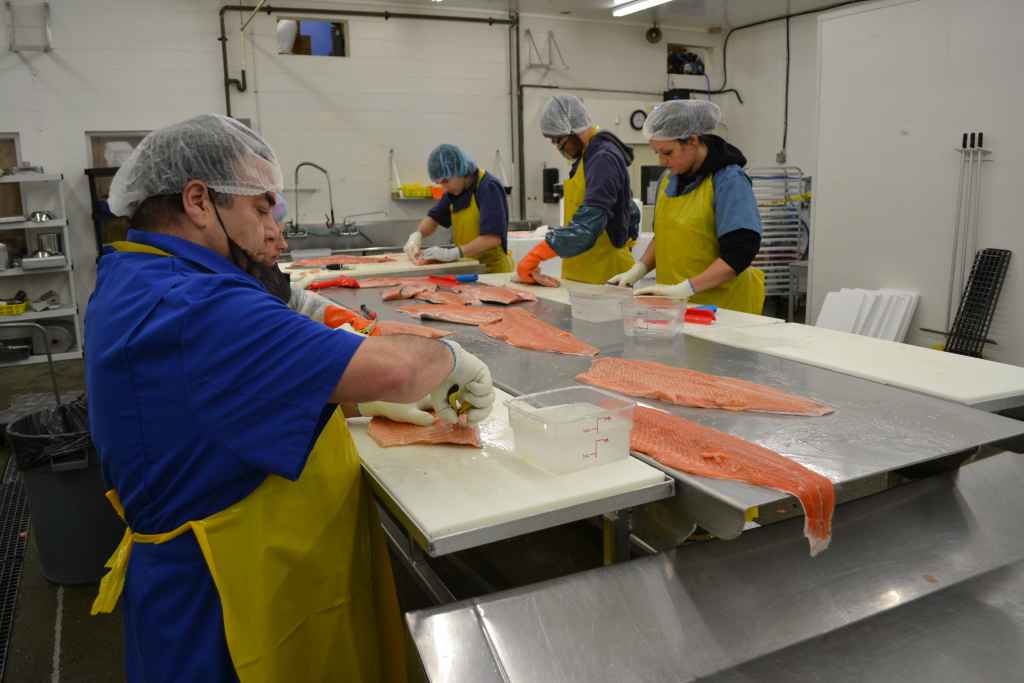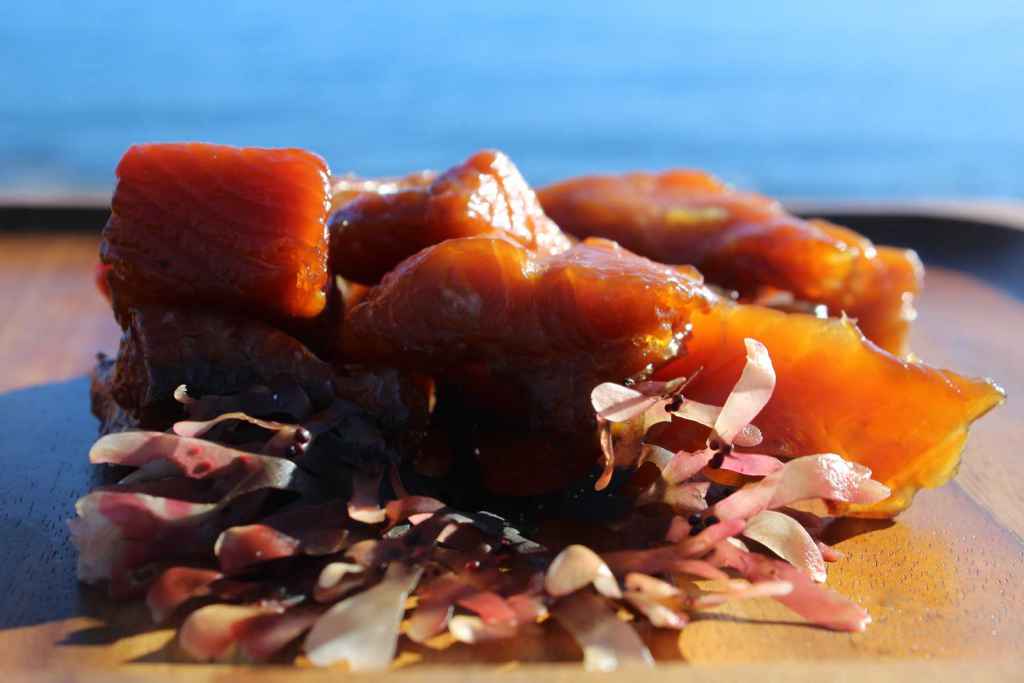By acquiring a local business, K'ómoks First Nation is supporting employment in their community and creating traditional First Nations' seafood products.
Salish Sea Foods: Investing in the Comox Valley
Estimated Reading time

12 Mins

Salish Sea Foods
Located in Comox BC, this retail store offers a variety of fresh seafood products to the community.
At a Glance
Members of K’ómoks First Nation have lived on the shores of Vancouver Island and its adjacent mainland inlets for thousands of years. They have a close relationship with the water and “K’ómoks” means “land of plenty”—reflecting the Nation’s traditional use of the rich resources from the land and sea.
The relationship between marine resources and the K’ómoks First Nation continues today as they create economic development opportunities for their future while continuing to use resources for traditional purposes through their Nation-owned seafood business.
Due Diligence for a Strong Growth Strategy
In 2012, management at K’ómoks First Nation identified an opportunity to use their existing shellfish aquaculture business as the foundation for further economic growth. They aimed to increase revenue by expanding their existing company into a new seafood processing plant.
Our economic development corporation envisioned expanding our involvement so that we were taking out the middle man. They wanted us to do our own seafood processing and deliver the finished product to the market ourselves.
“We already had tenures for unprocessed clams and oysters that we were bringing to market through our existing company, Pentlatch Seafoods,” explains Robert Everson, former Chief Councillor of the K’ómoks Nation. This meant the shellfish produced from the Nation-owned tenures were being sold raw in bulk to processors, rather than directly to customers.
“Our economic development corporation envisioned expanding our involvement so that we were taking out the middle man. They wanted us to do our own seafood processing and deliver the finished product to the market ourselves,” says Everson.

The Nation began searching for potential locations to build a processing plant. “Originally, we thought we would build our own facility,” confirms Everson. “However, after an extensive search, our team realized the requirements for a location to build and construct a new plant from scratch were very prohibitive.”
Changing tactics, the Nation began to look for an existing facility to purchase instead. “Once we realized the cost savings, we initiated a search for a facility with an owner that might be willing to sell,” he explains. “And we found one.”
The results of this approach were even better than expected. “After doing a business analysis we realized that the processing plant that was already right here in the valley would mesh well with our existing seafood venture and positively add to the business that we already had,” says Everson.
Expanding Under New Ownership
Once the facility was identified and purchased, K’ómoks created Salish Sea Foods and began upgrading the facility. “The processing plant had previously been a family-owned businesses for 30 years,” explains Melinda Knox, the Chief Executive Officer of the K’ómoks Economic Development Corporation (KEDC), the parent company of all the Nation’s businesses.
“With the funding we received from Coast Funds, we were able to purchase this processing facility and turn it into Salish Sea Foods, which is now wholly owned and operated by K’ómoks First Nation.”

K’ómoks Nation set out to transition the business from its family-owned roots to its full potential as a Nation-owned business. “It was a very comfy family business before,” explains Knox. “They were doing just enough revenue to make a comfortable living, employing about 14 people part-time.”
The Nation wanted to ramp up operations to increased revenue and employ more people. Part of this process included expanding the facility to process additional species, including the shellfish harvested from K’ómoks’ Pentlatch Seafood business.
This change meant a lot of initial labour after the business changed hands. “There was a lot of extra hard work being put into it to change all the assets and re-organize the company,” says Knox. “We also developed a retail store and renovated it, and really upgraded everything.”
We wanted to bump up production and increase marketing to make the business really well known. The goal was to create opportunity for our members and growth for the Nation-owned venture.
The results have been worth the effort. “We wanted to bump up production and increase marketing to make the business really well known,” explains Knox. “The goal was to create opportunity for our members and growth for the Nation-owned venture,” says Knox.
These investments paid off, and the changes translated into increased profits and employment. “We retained all of the original employees and have hired even more. We now have 24,” says Knox. “I think it’s been a really excellent company for us and I don’t think we would have been able to do it if it wasn’t for Coast Funds.”

Developing a Recognized Brand
At the heart of Salish Sea Food’s success is their quality products. “With the expansion, we were able to develop more product lines,” says Knox. “We have specialized in value-added seafood. It’s much more than just simple processing.”
These market-ready products elevated the reputation of the business, in particular their traditional candied salmon lines. “For example, Salish Sea Foods has seven flavors of candied and peppered salmon, including smoked barbeque, spicy thai, teriyaki, honey garlic, and tandoori,” says Knox. “We also have much more variety of types of seafood than before. We have salmon, halibut, mussels, tuna, crabs, and more. We can really do it all since the expansion of the processing plant.”

To take the success of these products even further, management at K’ómoks have worked to develop key partnerships with large distributors. “We forged a partnership with Thrifty Foods,” confirms Knox. “They really appreciate the unique Salish Sea Foods brand and our products sell very well with them.”
The investment in marketing and development of partnerships are a huge asset to the business. “We are continuing to do a lot of marketing this year so that our name is out there,” says Knox. “Our sales are really strong and word about our products have reached far and wide—we even have strong sales as far away as Boston and Los Angeles.”
Our sales are really strong and word about our products have reached far and wide — we even have strong sales as far away as Boston and Los Angeles.
Key Challenges and Successes
Finding Strategic Solutions to Capacity Challenges
“I think that one of the biggest challenges moving forward for companies like Salish Seafoods is that when you are buying an existing company, it has limited capacity,” explains Everson. “The infrastructure has a certain amount of square footage and that limits what you are able to do at maximum capacity.”
To meet this challenge, K’ómoks continues to find potential ways to develop new value-added products. “Growth is so important for business,” says Everson. “We’ve grown so much and so fast, that I think we are reaching that threshold of production capacity, so it’s up to our managers at KEDC to continue to find creative ways to add value and to market strategically.”
Knox agrees. “For us to grow much larger now, we need to invest in another facility, so we will keep that on our radar as we move forward.”
Building and Maintaining Relationships
Investing in partnerships and the local community has been key to Salish Sea Foods’ operations. It started by establishing good rapport with the facility’s previous owners and continues today with their employees and the local community. “We had a really good relationship with the previous family owners of the business, and kept that relationship through the changeover,” confirms Knox.
This eased the transition of the business, and enabled retention of all of the previous employees. It’s an approach Knox recommends. “I think it is easier to take on an existing business that is already established than to start from the ground up, especially if you have a good working relationship with the previous owners. But you still have to make sure that you have a great product and that you’re a good company—for your customers, employees, and fellow community members.”
In return, building these relationships help build the business. “We participate in a lot of events, like the local shellfish festival here, and we do a lot of donations to different community events that happen in the valley,” says Knox. “We are a real player in our surrounding community. We do it to give back, but it also helps us by getting word about the business out there—everyone knows our products and what we do and who we are.”
We are a real player in our surrounding community. We do it to give back, but it also helps us by getting word about the business out there.
Economic Outcomes
This project resulted in the acquisition of a processing facility, a new Canadian Food Inspection Association processing license, and the creation of a new businesses, Salish Sea Foods. This business has resulted in significant employment opportunities and economic benefit for the Comox Valley, including distribution agreements with local restaurants, grocers, and other distributors.
“We primarily employ Comox Valley residents,” says Everson. “We’ve created a dozen new jobs in the valley that would have left our community otherwise, and all of the dollars earned with it. We are supporting families through this economic venture.”
In turn, these incomes support the local economy. “The thing about First Nations owning and investing in businesses in a community that they live in that all of the dollars made and jobs created stay within that community,” says Everson.
Learn more about new businesses.
Social Outcomes
The incorporation of Salish Seafoods has created 11 new jobs, two of which are held by K’ómoks First Nations members. All of the existing employees of the business were also retained, bringing the total number of employees to 24.
K’ómoks Nation also supports its employees to receive training so that they can build up their skill sets. “We want to have the ability to build capacity in our local community,” says Everson. “We want to create good employees and give them the skills they need, not just for their job with us, but for jobs that they might have in the future.”
Learn more about skills training.
Environmental Outcomes
Before the creation of Salish Sea Foods, the facility in Comox Valley primarily processed farmed fin fish. K’ómoks’ change to focus on a wider variety and higher volume of local shellfish has shifted the overall sustainability of the business and supports low-impact, natural aquaculture in the Nation’s territory.
Cultural Outcomes
Salish Sea Foods provides custom processing to all customers, and it offers this at a discounted rate to K’ómoks First Nation members, increasing their access to traditional food.
The company logo also proudly displays the art and culture of the First Nation, including the incorporation of the legend of Komo Gway on their famous oyster products. The presence of these brands in the international market is a point of pride for the Nation.
Learn more about traditional foods.
Between 2012-2013, Coast Economic Development Society approved two projects totalling $405,420 toward this initiative.
Partnerships
Online Resources
- The Brand of K’ómoks First Nation Seafood Products.
The Province, September 2015. - K’ómoks Economic Development Branch Buying Seafood Company.
Comox Valley Record, January 2013
Published On February 6, 2016 | Edited On January 23, 2023


